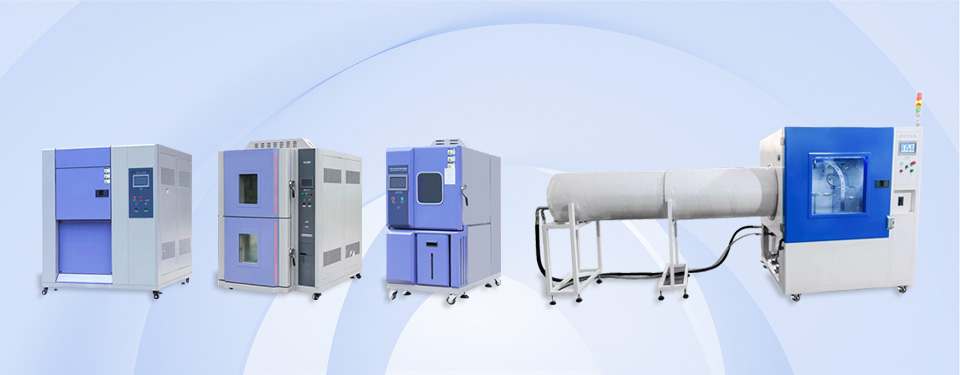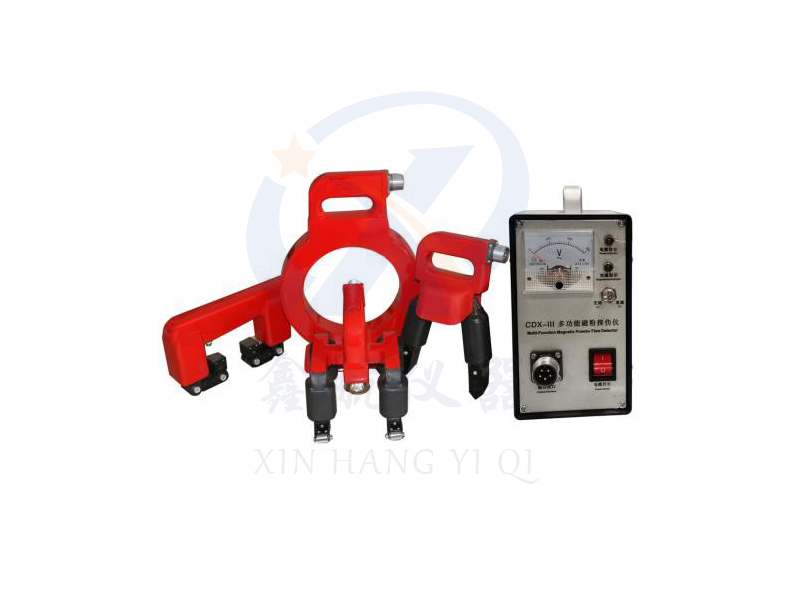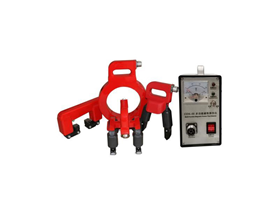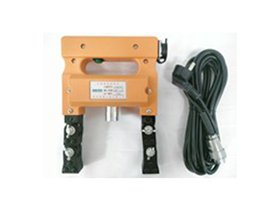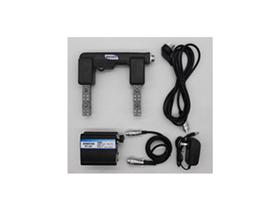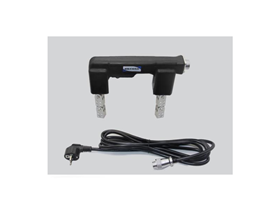The XH-TSC-610C electromagnetic yoke, horseshoe type, and magnetic ring flaw detector is a magnetic particle flaw detector that uses a magnetic yoke to perform AC magnetization on ferromagnetic inspected workpieces. It can perform magnetization testing on various parts, including local magnetization testing on large components, and can be used for external magnetic testing and residual magnetic testing.
The instrument uses controllable silicon to form a contactless switch, with low noise and long lifespan. The instrument has small volume, light weight, large lifting force, adjustable joints, and is suitable for flaw detection of flat welds, fillet welds, pressure vessels, pipelines, and complex shaped components. The instrument output is low voltage, which is more suitable for situations where high voltage is not allowed to enter the equipment for testing.
Suitable for industries such as aerospace, aviation, railways, automobiles, ships, pressure vessels, machinery, etc.
This device has three types of probes: (randomly equipped with only A-type probes)
1. Electromagnetic Yoke Probe: Equipped with a movable joint, it can detect flat and curved workpieces.
Electromagnetic yoke pole spacing: 0-250mm.
2. Horseshoe probe: It can perform local inspection on various corner welds and the inner and outer corners of large workpieces.
Horseshoe pole spacing: 0-160mm.
3. Magnetic ring: It can meet the requirements of detecting circumferential cracks that can be inserted into workpieces. It is extremely convenient to use it to detect fatigue cracks in workpieces (fatigue cracks are all perpendicular to the axis), and it can also demagnetize workpieces far away.
Magnetic ring diameter: Φ 150mm 1800TA.
Specification parameters
|
project
|
XH-TSC-610C
|
|
input voltage
|
AC 220V ± 10% V
|
|
output voltage
|
AC 36V
|
|
Output current
|
> 10A
|
|
Boosting power
|
Over 5 kg
|
|
Temporary load rate
|
50%
|
|
Flaw detection sensitivity
|
Type A 1 # test piece displays clearly
|
|
External dimensions of the host
|
230 x 160 x 120mm (length x height x width)
|
|
weight
|
5 kg
|
Structural characteristics
The instrument adopts a controllable silicon switch, with safe and reliable low voltage output. The probe adopts two types: fixed and externally adjustable. The adjustable probe can adjust the pole shoe spacing according to different component shapes and has good contact.
Operation usage
1. Insert the circular plug of the power cable into the three core power socket of the instrument, and insert the single-phase plug of the cable into the socket of the power grid distribution board. (There must be a solid grounding wire) Connect the instrument power switch, and the indicator light will light up, indicating that the circuit is powered on.
2. Insert the aviation plugs at both ends of the cable into the instrument socket and probe socket respectively.
3. Make good contact between the probe and the surface of the workpiece being tested, press the magnetization button on the probe, and the magnetization indicator light will light up, indicating that the workpiece is magnetized.
4. When stopping use, turn off the instrument power switch and the main switch on the power grid distribution board.
matters needing attention
When using this instrument, it is necessary to have good contact between the probe and the workpiece being tested before pressing the magnetization button, otherwise the current in the coil will increase and burn out the fuse, and even damage the thyristor. If it is necessary to adjust the magnetic pole spacing, loosen the butterfly nut on the adjustable joint to change the magnetic pole spacing, and then tighten the nut to work.
Troubleshooting
1. The power indicator light is not on: it may be due to a faulty light bulb, a faulty power switch, or a blown fuse.
2. Blown fuse: The fuse installed on the panel is connected to the primary of the transformer. When there is a large current component in the primary of the transformer or a fault such as a primary or secondary short circuit, it can cause the fuse to blow. If it is not possible to determine which part of the fault is during maintenance, the two transformers can be separated, connected to power sources separately, and then inspected separately to identify the fault
3. The magnetization indicator light is not on: it may be due to a faulty light bulb, a small relay malfunction, or a malfunctioning thyristor.
Equipment completeness
|
main engine
|
1 unit
|
|
Electromagnetic yoke
|
1 piece
|
|
Power cord
|
1 piece
|
|
Cable line
|
1 piece
|
|
Packing list
|
1 copy
|
|
instructions
|
1 copy
|
Portable multi-purpose magnetic particle flaw detector with optional probe
A-type probe: horseshoe magnetic yoke corner weld probe, movable joint inclined magnetic head, equipped with work light; Especially suitable for detecting irregular surfaces and complex shaped workpieces. Polar distance: 20-160; Boosting power: AC ≥ 5, DC ≥ 18. Equipped with an electromagnetic yoke corner weld flaw detector, the probe adopts a movable joint and can be freely adjusted for a wide range of use.
E-type probe: cross magnetic yoke probe or rotating magnetic field probe, capable of comprehensive composite magnetization testing in one go. Walking rollers and working lights can improve the testing speed. Pole distance: 110, lifting force: AC ≥ 8. Equipped with a rotating magnetic field detector, two crossed magnetic yokes adopt AC electric phase shifting technology to generate a composite rotating magnetic field that changes over time, which can comprehensively magnetize the workpiece. The probe has fast speed and high detection quality.
D-type probe: electromagnetic yoke probe, with multiple movable joints and high magnetization strength. Pole distance: 60-220, lifting force: AC ≥ 6, DC ≥ 20. Equipped with an electromagnetic yoke corner weld flaw detector, the probe has the characteristics of high magnetic conductivity and strong magnetization.
O-shaped probe: also known as a circular probe, with an inner diameter of 150 and a central magnetic field of ≥ 180Oe. Equipped with a circular flaw detector, it is designed based on the principle of generating a strong magnetic field when the coil is energized, and is suitable for segmented flaw detection or demagnetization of complex workpieces such as shafts, pipes, and bolts.
Optional 125W ultraviolet light bulb.



